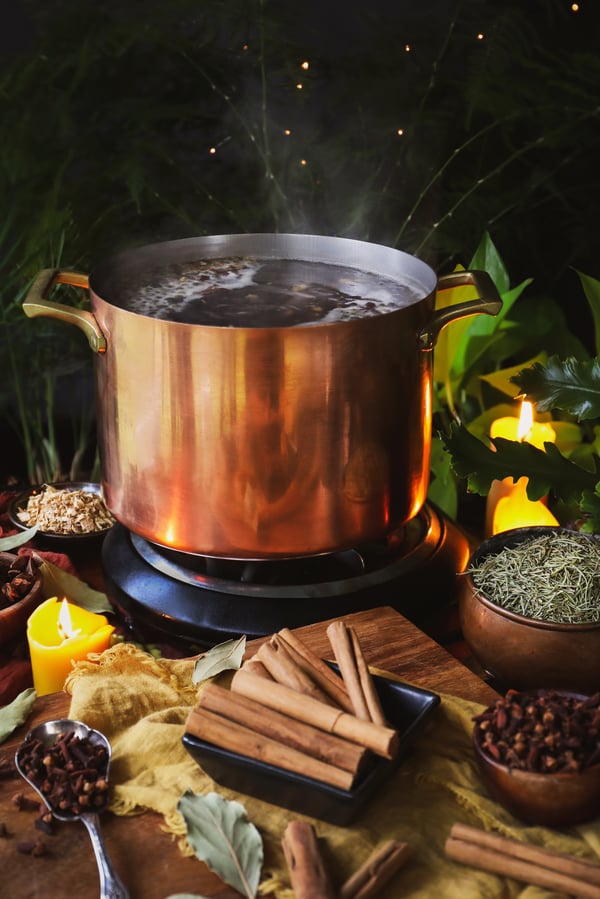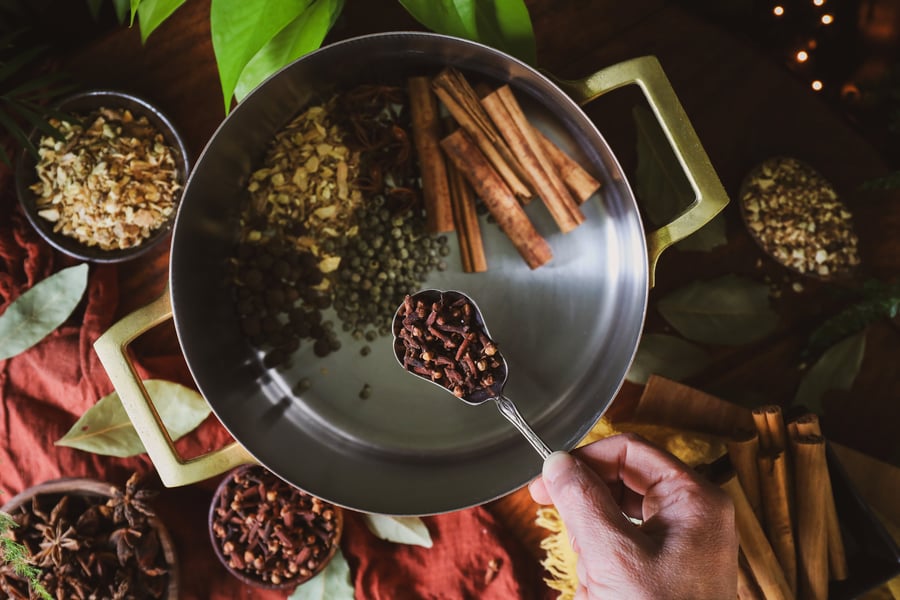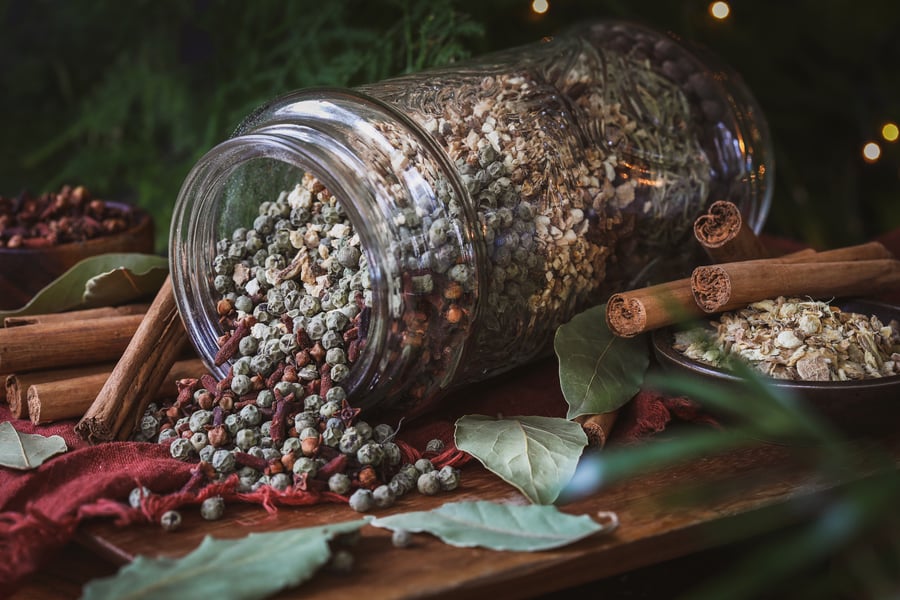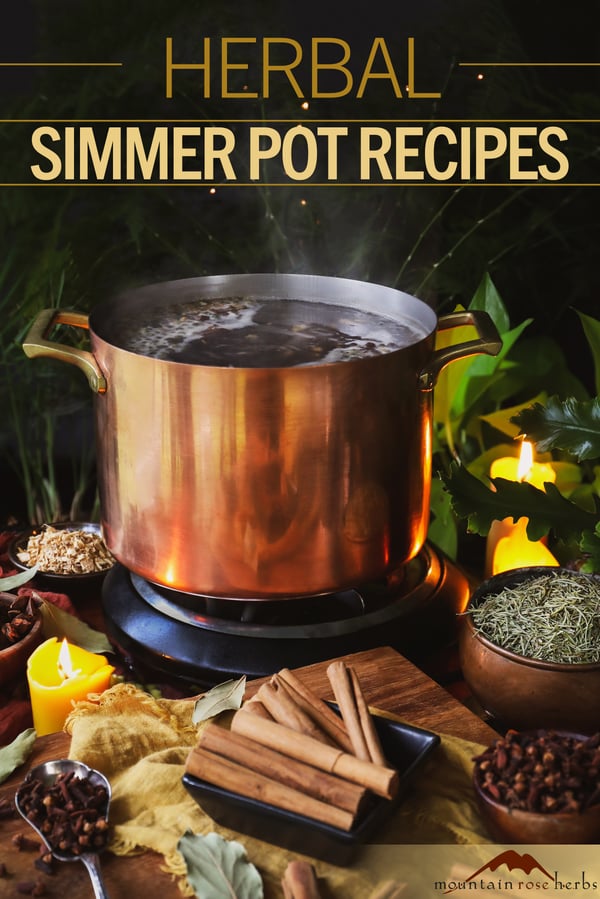
This time of year, scent is an important part of my home. Seasonal aromas make autumn feel more alive and more celebrated. It makes coming home all the more enjoyable and brings added seasonal awareness to the two teens in my household. To achieve this, many of us DIY folks craft up our favorite diffuser blends, wax melts, and DIY candle recipes. While I like to make all of those things, I have recently added simmer pots to my repertoire. I have really enjoyed this new avenue of bringing fresh and fragrant smells to my home, so I thought I would share some of my family’s favorite combinations.
What is a Simmer Pot?
As the name suggests, a simmer pot is a hardy pot that is filled with fresh water and aromatic herbs and spices, then left to simmer for several hours so they emit their natural fragrance. You may have also heard them referred to as stovetop potpourri or simmering pots. They are all the same thing.
There are, of course, pros and cons to simmer pots. Here’s my experience with them—the good and the bad.
Pros of Simmer Pots
- They are beautiful! I love the aesthetic of stovetop potpourri. It also makes a lovely conversational piece when you have guests over.
- Simmer pots add fresh aromas to any space and are very accessible. They are often made with common herbs and spices you probably already have.
- They are a useful way to use old herbs. Simmer pots offer a great opportunity for those spices that got pushed to the back of your pantry. Your home will not only smell lovely, but you’ll be making way for fresher more vibrant botanicals for holiday cooking and health applications.
- You can make them very quickly and it is easy to get creative with your blends.
- You can make an easy herbal blend as a thoughtful DIY gift.
- The steam adds moisture to the air, which is great when you have your heat on or a wood stove or fireplace burning.
Cons of Simmer Pots
- Unlike diffusers that have an automatic shut-off, you have to make sure you set reminders to add water or turn off the heat so you don’t wind up with charred botanicals and a ruined pot. It can also be a fire danger if forgotten for long enough.
- Unlike more energy-efficient diffusers and candles, this method may use more energy if you’re using your kitchen stove. I prefer to create simmer pots for my wood stove, but I recognize not everyone has one. You also have to watch the water levels more closely on a wood stove since temperatures can fluctuate a bit more and they generally get hotter than a stovetop.
- Strong botanicals that contain resins can stain or leave a hard-to-remove residue on your pots. Using a designated pot (preferably from your local secondhand store) is recommended.
Simmer Pot Recipes
Fall Simmer Pot
Ingredients
- 8 cups water
- 4 organic cinnamon sticks, broken
- 2 Tbsp. dried organic ginger root
- 1 Tbsp dried organic clove buds
- 1 Tbsp. dried organic allspice
- 1 Tbsp. dried organic orange peel
- 1 Tbsp. organic peppercorns
- 4 organic star anise pods
Energy and Focus Simmer Pot
Ingredients
- 8 cups water
- 1/4 cup dried organic rosemary leaf
- 2 Tbsp. dried organic basil leaf
- 2 Tbsp. dried organic ginger root
- 1 Tbsp. dried organic oregano leaf
- 1Tbsp. dried organic sage leaf
- 4 organic bay leaves
- Add water and botanicals to pot and set on stovetop burner (or woodstove).
- Put on medium-low heat until it comes to a gentle boil.
- Lower heat and allow to diffuse for as long as desired.
- The heat of each stove is a little different, so begin checking on it every 45 minutes to see how the water level is. Once you get a better sense of your stove settings, you can extend this time.
Best Herbs and Spices for Stovetop Potpourri
The world is your oyster when it comes to stovetop potpourri. Here are some of my favorite aromatic herbs to use, but I encourage you to get creative.
- Allspice
- Anise Star Pods
- Basil Leaf
- Bay Leaf
- Cardamom
- Cedar Leaf
- Cinnamon
- Cloves
- Eucalyptus
- Ginger Root
- Lavender
- Lemon Balm
- Lemongrass
- Orange Peel
- Oregano
- Peppercorns
- Peppermint
- Rosemary
- Sage Leaf
- Spearmint
- Thyme
- Tonka Beans
I hope these tips and recipes offer a starting point to create your own simmer pot blends. If you’d like us to share more simmer pot recipes, please comment below with the types of blends you’d be interested in!
Want to Learn About Other Ways to Freshen Up Your Space?
Check Out These Tips and Recipes for a Fresh-Smelling Home
You may also enjoy:













